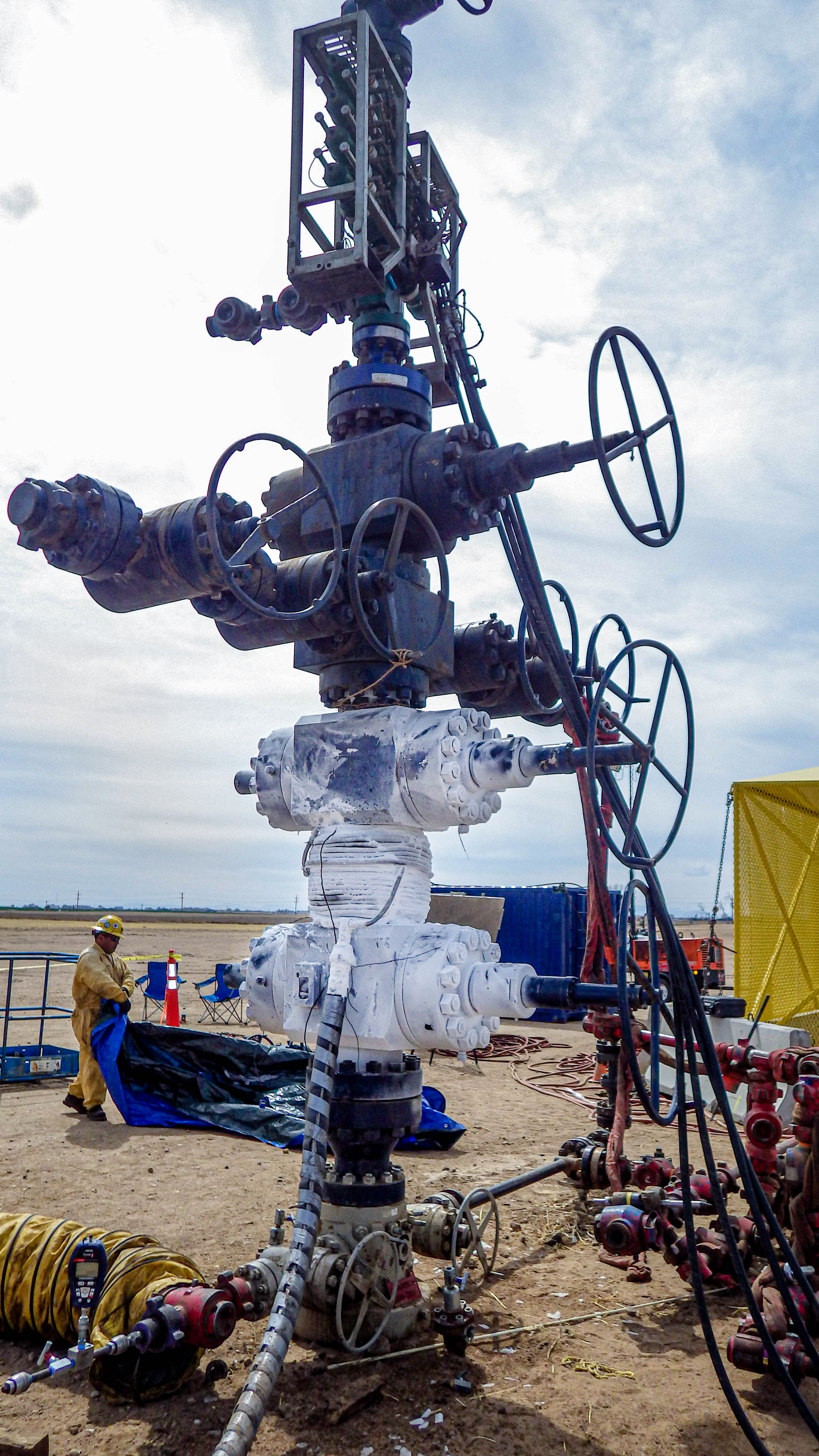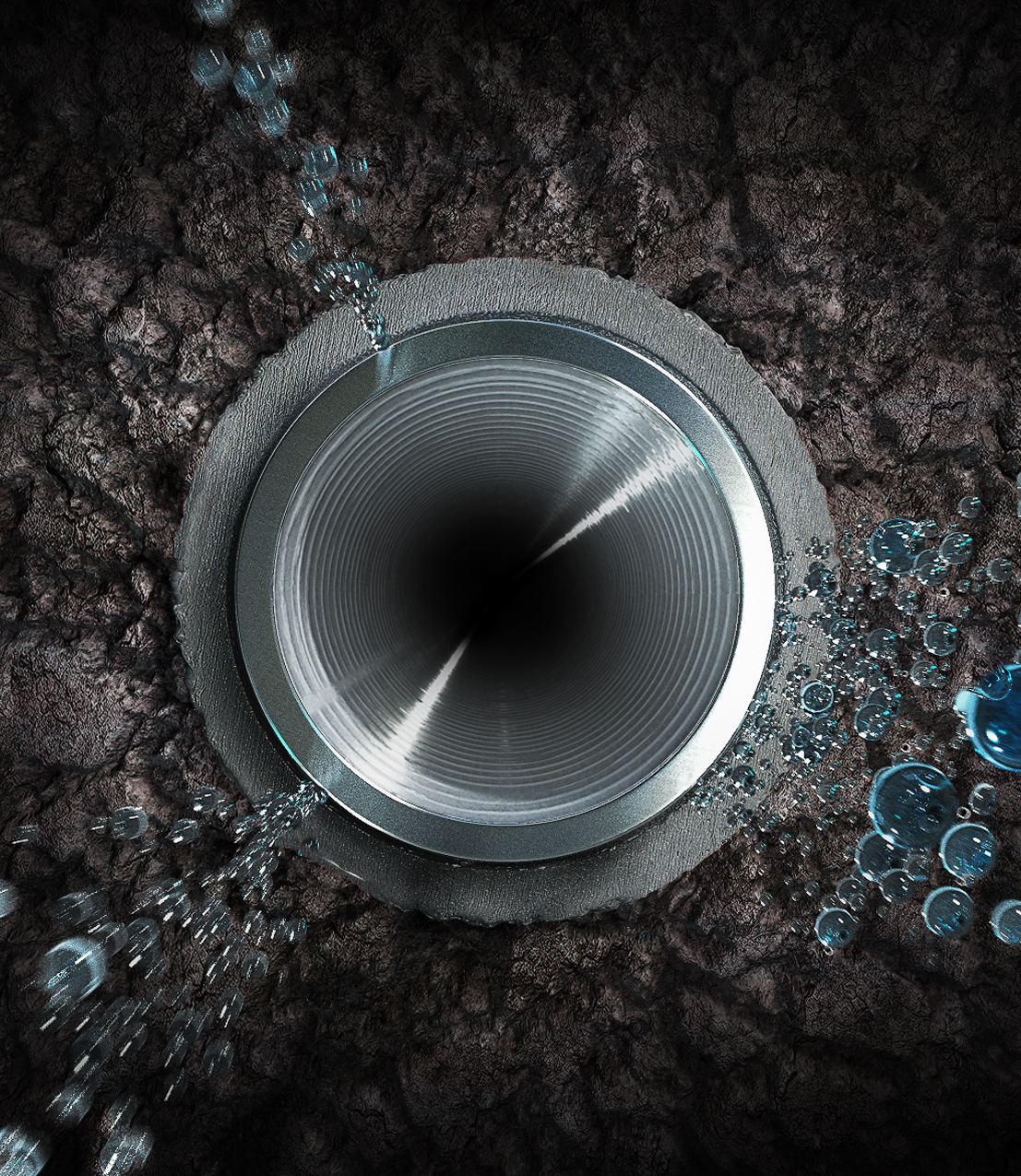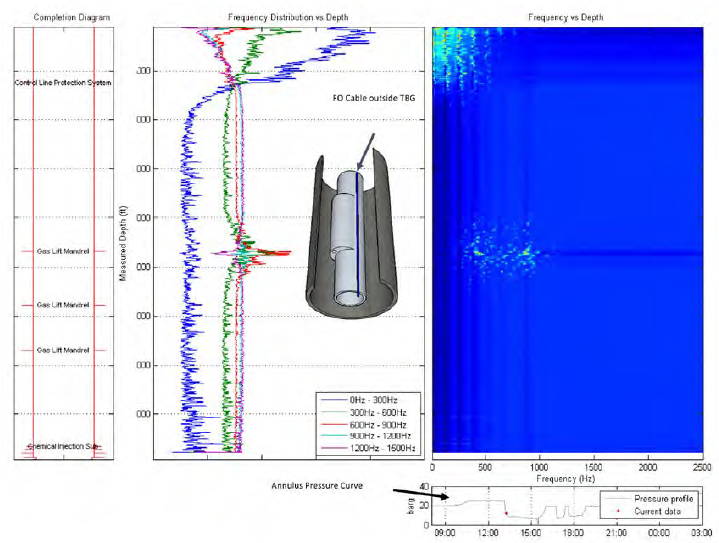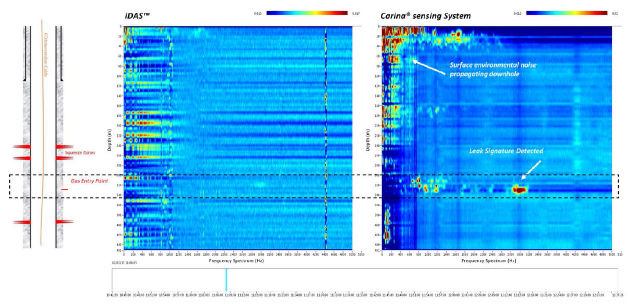[Editor's note: A version of this story appears in the May 2020 edition of E&P. Subscribe to the magazine here.]
One of the most critical elements of the well design process is ensuring the wellbore’s stability throughout its entire life span, from drilling to completion to production all the way through to abandonment. Well integrity is essential for the safe production of oil and gas and to ensure operations are environmentally sound.
Proper construction and monitoring of the physical barriers designed to prevent unplanned fluid movement and even more serious problems like blowouts have emerged as a key step in wellbore construction. Many service providers have developed a suite of tools and technologies designed to detect and prevent possible failures. Among those technologies are monitoring, logging and automated tubular connecting systems that keep workers out of harm’s way.
As ConocoPhillips stated on its website in regard to well integrity, “Properly designed and constructed wells safeguard workers and communities, minimize risks of leaks and spills, protect groundwater and surface water, are safe to operate and have low probability of long-term failure.”
Much has been made, rightly so, of the gains achieved in drilling and completion practices that propelled the North American shale industry to serve as the prime mover on the world energy stage prior to the COVID-19 pandemic that sent energy demand around the world plummeting. As a result of diminished demand, massive global oversupply of oil and near-maxed out storage capacity, the price of oil crashed into negative valuation in late April, but it still lingers in sub-$30 territory, making production growth at the scale seen before unlikely in the near term.
But even in a diminished capacity, the world will need oil as it begins to rebuild post-pandemic. One day commercial flights will again lift off, cruise ships will disembark and families will take road trips.
“We as an industry have evolved to the point where we have very strong processes around well integrity.”—Amer Khayyat, Silixa
To be prepared for when that time does come, the petroleum industry must ensure its foundation and infrastructure are secure. And one of the foundations of upscaling production lies not in the intricacies of the latest widgets, but the integrity of the well itself.
Much like a house cannot stand without a durable foundation, or a car cannot run without a muscular frame, a well cannot produce to its full potential without being completely stabilized in its reservoir. Aside from insufficient production, a compromised well can result in unplanned fluid movement, damaged equipment, total well abandonment, environmental complications and, in the most dire circumstances, blowouts, injuries and even loss of life.
“Well integrity is a global issue, and mitigation of these issues is not just a problem, but it’s an obligation for our industry to make sure that we deliver a safe well,” said Doug Farley, global product line manager at Weatherford.
Although it’s difficult to put a number on what percentage of wells globally suffer integrity problems, the issue was crucial enough that the Society of Petroleum Engineers dedicated an entire three-hour panel discussion to casing deformation at this year’s Hydraulic Fracturing Technology Conference and Exhibition in January in The Woodlands, Texas. The panel included representatives from Shell, BP, ConocoPhillips, XTO Energy and Ovintiv (formerly Encana) detailing their companies’ experiences with damaged well casing, the causes of it and lessons learned.
The consensus among the panelists was that tectonic displacement is often the cause of casing deformation issues and that a priority should be placed on utilizing high-grade casing in the wellbore to prevent structural distresses.
But as Paul Day, global vice president of sales and marketing for well completions with Weatherford, explained, much of the industry focus recently has been on developing efficient completion technologies rather than on maintaining structural integrity.
“I have not seen the same efforts placed on the foundations of your house,” he said. “The completion is your plumbing and your electrics, but the foundation of your house is your casing, your cement job and your centralization. Those standards have not been as rigorously applied as they have been to the tubing-based equipment, which is the completion, the safety valve, the packer or ball valve.”
Amer Khayyat, vice president of oil and gas at Silixa, said that with a critical public focused on the stewardship of the oil and gas industry, well integrity has grown into an urgent priority.
“As our industry has matured and as the public eye is more and more trained on us, I think we as an industry have evolved to the point where we have very strong processes around well integrity. And we have a very strong regulatory regime that ensures that we are keeping up with the necessary actions and the necessary monitoring that is required to ensure that we don’t have well integrity issues,” he said.
Causes of integrity problems
Although geologic factors, like shifts in the rock downhole or seismic events, might be the most difficult to account for when considering a well’s structural integrity, the makeup of the wellbore’s components and the methods in which those components are installed and utilized are essential to a well’s stability. Chiefly among those components are the cement job and casing, which include the condition that casing is installed and connected.

“The majority of the issues seem to occur in the tubing or the casing not being properly torqued,” said Cliff Meade, general manager of unconventional marine and special services with Wild Well Control. “Obviously if casing is not torqued, it could leak. Poor practices with cement can also occur, because the cement between casings is a barrier to the zones that you’re trying to keep in the ground and not have come to surface. So anything having to do with casing, tubing or cement, if done improperly, could lead to some sort of integrity issue.”
As Meade explained, cement creates barriers between zones, including shallow saltwater zones, which could leak into the wellbore and cause damage to both the well and saltwater zone. Meanwhile, Day believes poor cementing jobs are the primary cause behind integrity problems.
“I’m a firm believer that poorly designed cement, poor centralization, is probably the biggest contributor to casing failures outside of tectonics,” Day said. “If you’re in the Colombian mountains and it decides to go and slice your casing in half, or you’re in a salt dome and it decides to slice your casing in half, that can happen. But the majority of well integrity issues are man-made, and they are absolutely preventable.”
The integrity of a wellbore’s casing begins with drilling techniques, which, if done improperly, can eventually lead to tortuosity problems and unplanned fluid migrations.
“Tortuosity is definitely one of the main factors that’s creating problems in casing,” said Kris Earl, regional manager for Gyrodata, which provides drilling, surveying and wireline services. “A lot of laterals today are drilled with rotary steerable systems, and all rotary steerable systems are automated to some extent. Most of the rotary steerable systems that we see on the market today are automated on the inclination side of the drilling points but not on the azimuth side. So they’re holding the inclination very low, but they’re having equally wide swings, which creates these micro-doglegs and tortuosity.”
Damaged casing, whether it be as a result of drilling mechanics or geologic factors, can lead to unplanned fluid movements. Fluid traveling along annuli can damage a reservoir, water zone and product flow through the wellbore.
“A well is not designed to have flowing fluids between casing strings, which can lead to unwanted pressure eventually creating a corrosive environment. Casing wasn’t designed to be in that corrosive environment,” Meade said. “We’ve seen this in a couple of examples recently, where simply some combination of bad casing or bad cementing allowed the fluids to get in, which created a surface issue because the surface was able to corrode at such a fast rate that it became an integrity issue at the surface.”
The proliferation of extended-reach laterals, some up to 3 miles in length, presents a number of technical challenges, among them maintaining casing integrity throughout the length of the wellbore. Additional complicating factors to that are the number of pads drilled on a single well pad.
“One of the things that we are seeing a lot of now…is a lot of issues in well integrity that are being induced by the drilling operation.”—Kris Earl, Gyrodata
“One of the things that we are seeing a lot of now, as the laterals get longer and longer and we put more wells on a pad, is a lot of issues in well integrity that are being induced by the drilling operation…casing integrity specifically,” Earl said. “If you step out farther on the pad before you start doing your 2D curve, then you have a lot of local wear parts through your nudge section that you’re going to wear out your casing as you continue drilling the rest of the well. There’s going to be a lot more wear on the casing where drillpipe is rubbing against it going in and out of the hole. There is definitely a lot of concern around casing integrity as we extend a lateral now as we put more wells on the pad.”
Many of the problems that contribute to integrity issues, such as cementing problems, casing deformation, tortuosity and unplanned fluid movement, can often be headed off in the well design phase. The ability to detect where and when problems may arise early on, before equipment is in the ground, can prevent lost production and wasted capex.
“When you talk well integrity, you’re talking about multiple aspects,” said Scott McIntire, global product line champion with Weatherford. “Sometimes you can be talking about casing string and sometimes you can be talking about completion strings as well. So it’s not just casing design, but it’s also completion design, which can have a drastic impact on the cost aspects as well as the environmental aspects.”
“You can have the best design in the world … [but] all the design in the world doesn’t help you if there’s a human factor issue that’s going to get you into trouble.”—Cliff Meade, Wild Well Control
Meade said one component of well design that often gets overlooked but one that can have a substantial impact on a well’s stability is the installation of the drive pipe.
“It’s a nonpressure containing pipe, but it’s an important structural pipe for supporting the well,” he said. “We get handed a design file with what should be in the well, and it seems like the drive pipe can be a problem. There have been a few issues where the drive pipe was not as designed or not present as per the design. So somewhere in the building phase of the well, that drive pipe was never incorporated the way it was supposed to be. If you think something as minor as that is being overlooked, then you have to think that there would be other items along the way that could get overlooked or mistakenly put in.”
Ultimately, as Meade explained, many of the issues that are associated with well integrity problems can be attributed to quality control and human error early on in the process.
“You can have the best design in the world, but if the personnel aren’t equipped to look for the small telltales of a kick coming in on the well and they’re not properly trained to address that, all the design in the world doesn’t help you if there’s a human factor issue that’s going to get you into trouble,” he said.
“The majority of well integrity issues are man-made, and they are absolutely preventable.”— Paul Day, Weatherford
Solutions to integrity challenges
Although a multitude of factors ranging from poor well design to simple human error to inadequate cementing and casing can result in the integrity of a well being compromised, service providers have created a range of technologies that can help prevent and even predict well integrity failures. Automated systems during the drilling and completion process can help offset the risk of human error, while logging and monitoring technologies can help identify potential problems before they occur.
Weatherford’s Vero automated connection integrity system is used in both onshore and offshore environments by leveraging artificial intelligence to eliminate errors or oversights in tubular connections.
“Automated connection integrity does two things,” McIntire said. “It automates the connection makeup to ensure OEM [original equipment manufacturer] criteria is met, and it delivers unrivaled accuracy on that final makeup torque that is just not possible with today’s traditional methods. The second part is the automated evaluation of the makeup graph. Today you have subjective decisions on evaluating that. We bring the computer technology to deliver the consistency that our industry needs to ensure we have well integrity of every connection that goes downhole in our wellbores.”
McIntire said Weatherford’s OEMs have developed casings with threads that handle high levels of tension, compression and pressure, but ensuring proper makeup downhole is often a repetitive process. Such processes are ideal for optimization through automation systems such as Vero, he said.
“It uses computer control to ensure the integrity of the pipe as we make it up and ensure that it’s made up precisely to that OEM criteria and that the makeup is also evaluated by the computer control,” McIntire said. “With today’s processes you’ve got a lot of human factors that affect both the makeup and the evaluation of each makeup graph. You’ve got a lot of subjective decisions. Someone makes a human subjective decision to approve or reject the graph. What Vero does is that it uses our auto-evaluate software, which is aligned to the OEM criteria, to ensure that each connection evaluation is done consistently and precisely to the OEM criteria rather than relying on a judgment factor.”

While automating the connector process can help avoid human errors, tools applied downhole can prevent fluid migration between annuli. Weatherford’s Micro-Seal isolation system unit safeguards long-term production integrity by preventing unwanted migration of well fluids through microannulus leak paths between the casing and cement sheath. According to the company, Micro-Seal’s swellable element effectively seals against the outside diameter of the casing and the inside diameter of the cement sheath, sealing regular and irregular annular geometries.
Another system designed to maintain a well’s stability is Gyrodata’s GeoGuide cement bond logging system, which identifies areas of casing damage and cement deterioration with high-density logs that provide precise wellbore profiles and help determine the condition of casing. The tool can help determine the compressive strength and thickness of a cement job, detect microannulus pressures and identify zonal isolation. Gyrodata’s Earl said a cement bond log is a “great line of defense” in the overall strategy in maintaining wellbore integrity.
“The only way to know if you’re going to have any compressional strength at all in the cement is to run a bond log,” he said. “It is highly important for the integrity of your wellbore, especially during the drilling phase. You need to have a really good understanding of what the stability of your wellbore is, and it’s important to be running these bond logs so you can actually see this and know that your completion program is functioning the way it should be. We look at cement bond logs as an integral part of the well stability over time.”
Silixa’s ArrayLog service provides well integrity monitoring using existing fiber-optic cables, distributed acoustics and temperature data to detect fluid movement. According to Silixa, distributed fiber-optic sensing provides the ability to efficiently detect fluid movements that might indicate barrier failure.
The ArrayLog suite includes the iDAS distributed acoustic technology and the ULTIMA DTS distributed temperature system that can be deployed to detect leaks or flow behind casing by running a fiber-optic log as either a slickline, cable or coiled tubing intervention. According to Silixa, the fiber optics behave as a sensor array so the entire fiber path is surveyed simultaneously, allowing well integrity issues at undetermined depths to be detected and localized quickly.


Khayyat explained that one of the primary benefits of utilized fiber-optic technologies downhole is its diversity in both how it’s deployed and the type of data and information it can provide.
“The beauty of the technology is that you can stick fiber in the ground and use it to monitor for seismicity, subsidence and microseismic events,” Khayyat said. “You can place it into a completion on the tubing or outside of the casing to monitor for well integrity leaks, perforations in the tubing, perforations in the casing and fluid channeling behind casing. And that’s when you have it installed with the well. If you don’t have fiber-optic installed, you can always deploy it into a well using a slickline or e-line and use it to run a log, which measures not just a single point in time but the entire well at the same time. This is because you’re running a sensor array all the way along the well. Because there is less restriction to flow, you can do more representative time-lapse diagnostics of a well’s performance as it runs through its various phases.”
Tools that both provide a solution to a wide-ranging problem such as well integrity and are also minimally invasive offer enhanced efficiencies and cost savings, he said.
“Being able to do this type of surveillance monitoring with the minimum amount of intrusion with the minimum amount of disruption to you throughout your operation while ensuring that you are still confident about the integrity of your producing assets is a wonderful thing,” Khayyat said.
“There’s a giant amount of value in ensuring that you have your well integrity from the start.”— Scott McIntire, Weatherford
Cost of inaction
In an environment in which efficiencies are prioritized, excessive costs are eliminated and every dollar spent must be justified, well logging and monitoring services might be seen as a luxury. But the benefits likely outweigh the costs, particularly if the result of integrity failures means a substantial loss in production and, subsequently, revenue.
Recompletions or total abandonment of a lost well could mean losses in the tens to hundreds of millions of dollars. Weatherford’s McIntire said costs to an operator could range between $10 million and $40 million for recompletions, interventions, penalties and late fees from delayed production.
“Some operators have looked at it and included deferred production loss. Some have told us it will cost them $260 million for a delayed production due to a well integrity issue where they had to bring in a workover rig, pull out a completion and rerun it,” he said. “There’s a giant amount of value in ensuring that you have your well integrity from the start. It starts with proper design, proper connection makeup in design, proper cementation, proper planning and centralization.”
Recommended Reading
Baker Hughes Awarded Saudi Pipeline Technology Contract
2024-04-23 - Baker Hughes will supply centrifugal compressors for Saudi Arabia’s new pipeline system, which aims to increase gas distribution across the kingdom and reduce carbon emissions
PrairieSky Adds $6.4MM in Mannville Royalty Interests, Reduces Debt
2024-04-23 - PrairieSky Royalty said the acquisition was funded with excess earnings from the CA$83 million (US$60.75 million) generated from operations.
Equitrans Midstream Announces Quarterly Dividends
2024-04-23 - Equitrans' dividends will be paid on May 15 to all applicable ETRN shareholders of record at the close of business on May 7.
SLB’s ChampionX Acquisition Key to Production Recovery Market
2024-04-21 - During a quarterly earnings call, SLB CEO Olivier Le Peuch highlighted the production recovery market as a key part of the company’s growth strategy.
PHX Minerals’ Borrowing Base Reaffirmed
2024-04-19 - PHX Minerals said the company’s credit facility was extended through Sept. 1, 2028.





